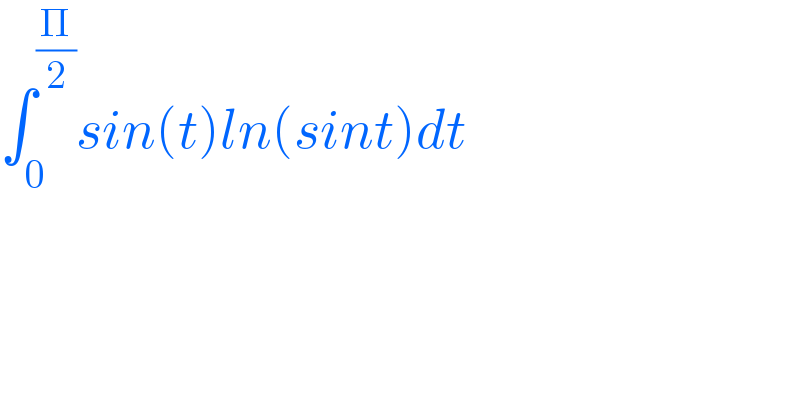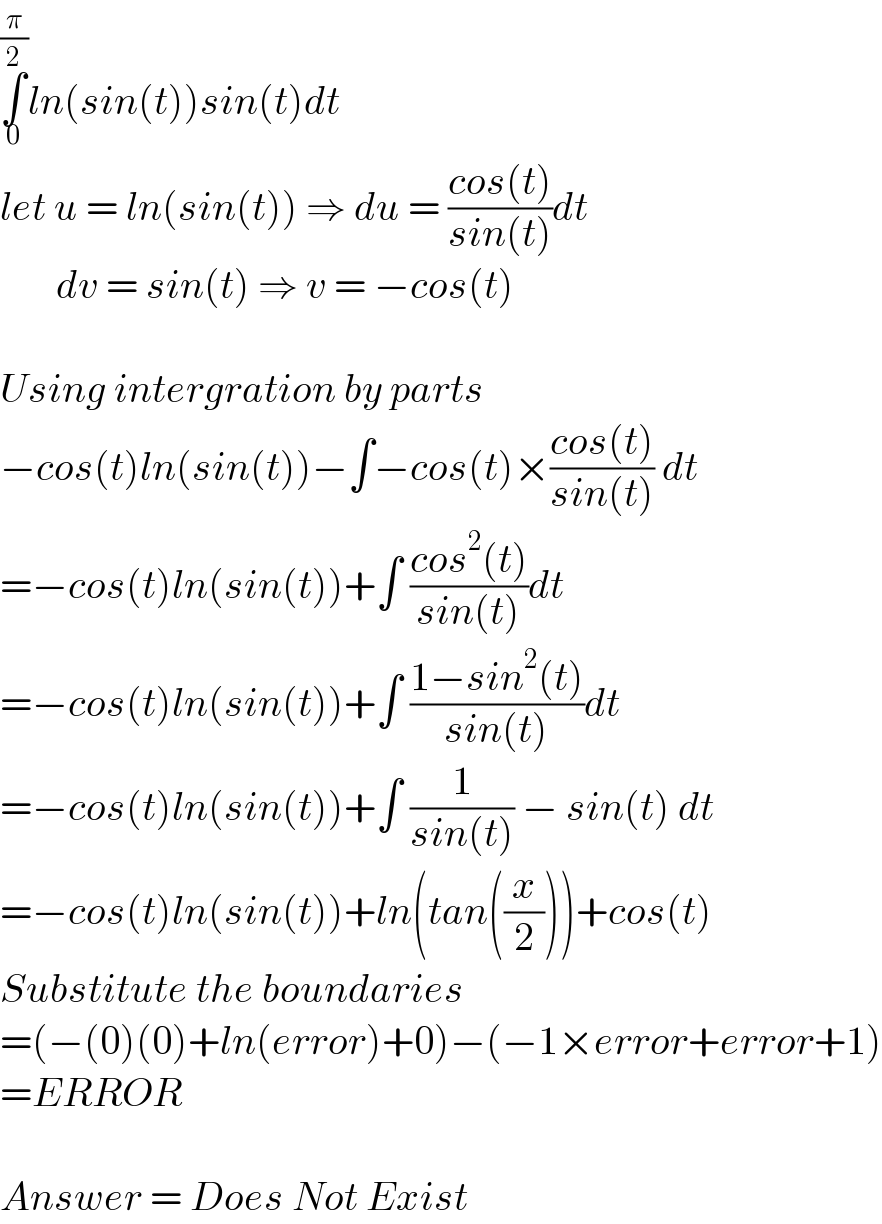
Question Number 204437 by SANOGO last updated on 17/Feb/24

$$\int_{\mathrm{0}} ^{\frac{\Pi}{\mathrm{2}}} {sin}\left({t}\right){ln}\left({sint}\right){dt} \\ $$
Answered by TonyCWX08 last updated on 18/Feb/24

$$\underset{\mathrm{0}} {\overset{\frac{\pi}{\mathrm{2}}} {\int}}{ln}\left({sin}\left({t}\right)\right){sin}\left({t}\right){dt} \\ $$$${let}\:{u}\:=\:{ln}\left({sin}\left({t}\right)\right)\:\Rightarrow\:{du}\:=\:\frac{{cos}\left({t}\right)}{{sin}\left({t}\right)}{dt} \\ $$$$\:\:\:\:\:\:\:{dv}\:=\:{sin}\left({t}\right)\:\Rightarrow\:{v}\:=\:−{cos}\left({t}\right) \\ $$$$ \\ $$$${Using}\:{intergration}\:{by}\:{parts} \\ $$$$−{cos}\left({t}\right){ln}\left({sin}\left({t}\right)\right)−\int−{cos}\left({t}\right)×\frac{{cos}\left({t}\right)}{{sin}\left({t}\right)}\:{dt} \\ $$$$=−{cos}\left({t}\right){ln}\left({sin}\left({t}\right)\right)+\int\:\frac{{cos}^{\mathrm{2}} \left({t}\right)}{{sin}\left({t}\right)}{dt} \\ $$$$=−{cos}\left({t}\right){ln}\left({sin}\left({t}\right)\right)+\int\:\frac{\mathrm{1}−{sin}^{\mathrm{2}} \left({t}\right)}{{sin}\left({t}\right)}{dt} \\ $$$$=−{cos}\left({t}\right){ln}\left({sin}\left({t}\right)\right)+\int\:\frac{\mathrm{1}}{{sin}\left({t}\right)}\:−\:{sin}\left({t}\right)\:{dt} \\ $$$$=−{cos}\left({t}\right){ln}\left({sin}\left({t}\right)\right)+{ln}\left({tan}\left(\frac{{x}}{\mathrm{2}}\right)\right)+{cos}\left({t}\right) \\ $$$${Substitute}\:{the}\:{boundaries} \\ $$$$=\left(−\left(\mathrm{0}\right)\left(\mathrm{0}\right)+{ln}\left({error}\right)+\mathrm{0}\right)−\left(−\mathrm{1}×{error}+{error}+\mathrm{1}\right) \\ $$$$={ERROR} \\ $$$$ \\ $$$${Answer}\:=\:{Does}\:{Not}\:{Exist} \\ $$
Commented by Frix last updated on 18/Feb/24

$$\mathrm{You}\:\mathrm{have}\:\mathrm{to}\:\mathrm{use}\:\mathrm{the}\:\mathrm{limits}.\:\mathrm{The}\:\mathrm{answer}\:\mathrm{is} \\ $$$$\mathrm{ln}\:\mathrm{2}\:−\mathrm{1} \\ $$
